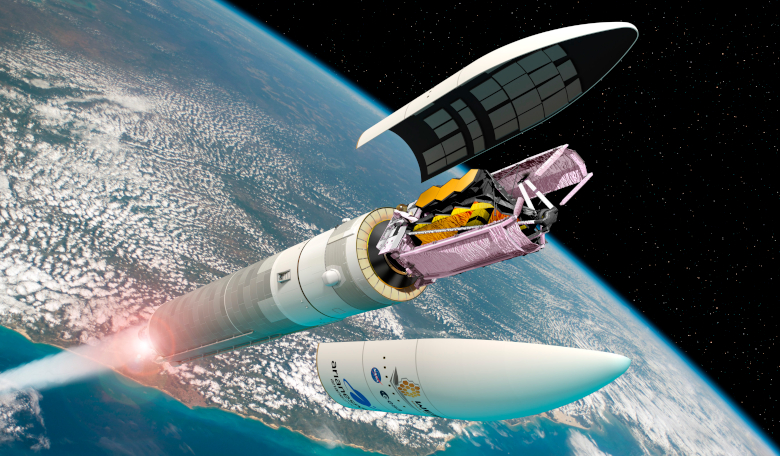With the Launch Readiness Review of the James Webb Space Telescope complete, it’s all eyes on the Ariane 5 rocket that will carry and deploy one of NASA’s most anticipated missions yet.
Now finally ready after years of delays and a recent communications problem that was discovered at the launch site, the James Webb Space Telescope is the most complex space science observatory ever built.
Not only will JWST allow scientists to explore parts of the cosmos never seen before, but its discoveries could fundamentally alter our understanding of the Universe.
With a mirror surface area roughly six times larger than that of the Hubble Space Telescope, it has the ability to see some of the earliest objects to form after the big bang, including light emitted by the first galaxies.
But closer to home JWST will be able to study exoplanets with an unprecedented level of detail, as well observe moons, comets, and other objects within our own Solar System.
This data will reveal the molecules and elements that exist on distant planets, and could unlock clues to the origins of our planet and life as we know it.
Key to JWST’s design is its huge 6.5 metres (21 feet 4 inches) wide mirror, which is made up of 18 hexagonal segments. Each segment weighs approximately 20 kilograms (46 pounds) and is made from beryllium, a lightweight yet strong metal. Each segment will also be coated with a thin layer of gold, which is an excellent material for reflecting infrared light, protected by a thin layer of glass. The amount of gold needed for all of the JWST mirrors is equivalent in a size to a golf ball.
This cutting edge design allows the mirror to fold like the leaves of a drop-leaf table, so that it can fit into a rocket. The mirror will then unfold after launch.
Light collected by the mirrors is directed to the telescopes science instruments, where it is filtered before focusing it on the detectors.
Each of Webb's four instruments has its own set of detectors, which absorb photons and convert them to electronic voltages that can be measured.
These detectors allow Webb to "see" light outside the visible range and show us otherwise hidden regions of space at the near-infrared and mid-infrared wavelengths.
With its longer wavelengths, infrared radiation can penetrate dense molecular clouds, whose dust blocks most of the light detectable by the Hubble instruments.
“I will be watching the launch with equal parts pride and trepidation,” said Marshall senior optical physicist Dr. H. Phillip Stahl, who worked mirror technology development for Webb. “I poured 30 years of experience and knowledge into helping make the telescope mirrors a reality. I will be greatly relieved once the observatory is in orbit and operational, and I expect I will feel a sense of ownership with each announced discovery.”
To watch the blast off live, NASA and its partners are planning a launch broadcast celebration that will be viewable in several different ways. Live countdown commentary and launch broadcast will begin at 6 am EST (11:00 GMT) on 25 December and air on NASA Television and the agency’s website, as well as YouTube, Twitter, Facebook, LinkedIn and NASA’s App.
You can also join the Facebook event to watch the launch live and interact with others watching the launch. The launch broadcast will continue until approximately one hour past launch, to follow the first several critical milestones post-launch.
The actual launch window opens at 7:20 am EST (12:20 GMT) and lasts for 31 minutes – JWST can be launched at any point during this window.
“I personally cannot believe the day is almost here. I’m so very excited for launch!” concludes Amber Straughn, Webb deputy project scientist for communications.











